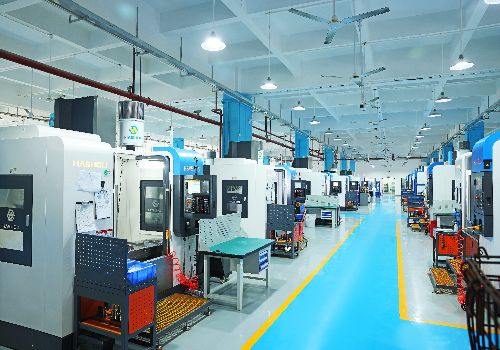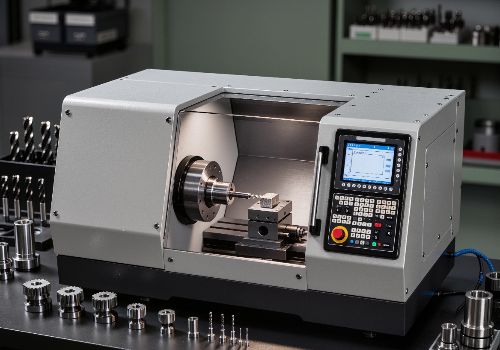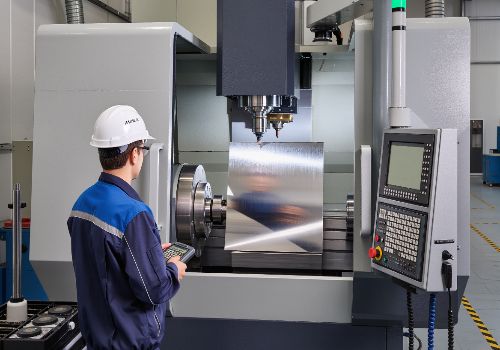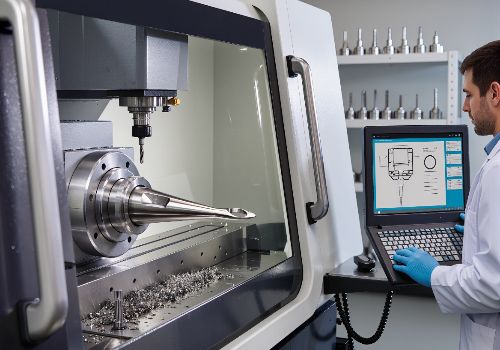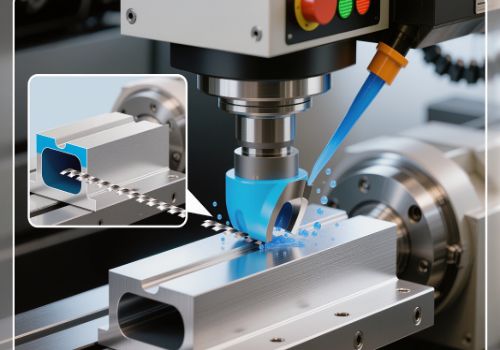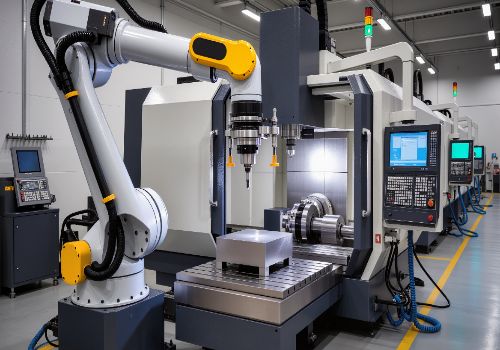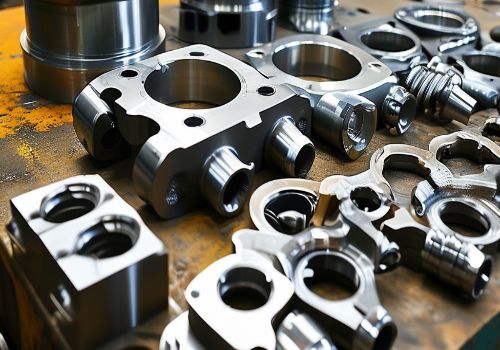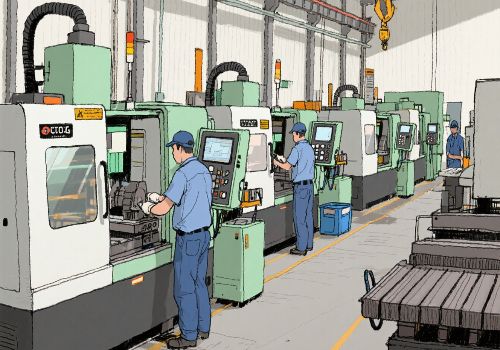Introduction
Large-scale CNC machining represents the pinnacle of manufacturing efficiency, where precision meets volume in operations that run 24/7 producing thousands of components. From aerospace frames to automotive engines, these facilities combine advanced technology, sophisticated workflow systems, and meticulous planning to achieve what single machines cannot: consistent precision at scale.
The global CNC machining market is projected to reach $115 billion by 2026, driven largely by large-scale operations serving automotive, aerospace, and industrial sectors. This behind-the-scenes look reveals how these manufacturing powerhouses actually work.
The Scale of Modern CNC Operations
| Metric | Small Shop | Large-Scale Operation |
|---|---|---|
| Machines | 1-10 | 50-500+ |
| Weekly Production | 100-1,000 parts | 10,000-500,000 parts |
| Employees | 2-20 | 100-2,000 |
| Facility Size | 1,000-10,000 sq ft | 50,000-500,000 sq ft |
| Shift Pattern | 1-2 shifts | 24/7 lights-out manufacturing |
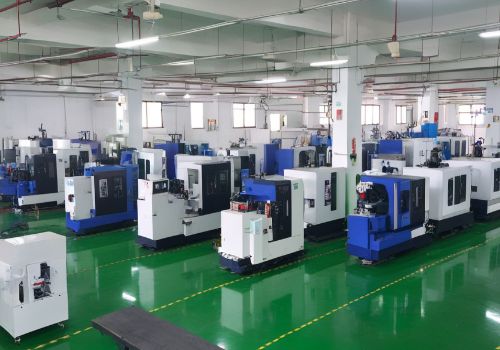
Core Components of Large-Scale CNC Operations
1. Advanced Machine Tools
Large-scale facilities utilize specialized equipment designed for continuous operation:
-
** machining centers**: 5-axis simultaneous machining
-
Mill-turn systems: Complete parts in single setup
-
Transfer lines: Dedicated systems for high-volume parts
-
Pallet systems: Automated workpiece handling
2. Automated Material Handling
-
Robotic loading/unloading: Fanuc, KUKA, or custom systems
-
AGVs (Automated Guided Vehicles): Part movement between stations
-
ASRS (Automated Storage/Retrieval): Raw material and finished part storage
-
Conveyor systems: Connecting machining cells
3. Integrated Quality Systems
-
In-process probing: Real-time dimension verification
-
Vision systems: Automated surface inspection
-
SPC (Statistical Process Control): Trend analysis and prevention
-
CMM (Coordinate Measuring Machines): Final verification
4. Enterprise-Level Software
-
ERP systems: SAP, Oracle, or custom manufacturing ERP
-
MES (Manufacturing Execution System): Real-time production monitoring
-
Advanced CAM programming: Multi-machine optimization
-
Digital twin technology: Virtual simulation of entire production line
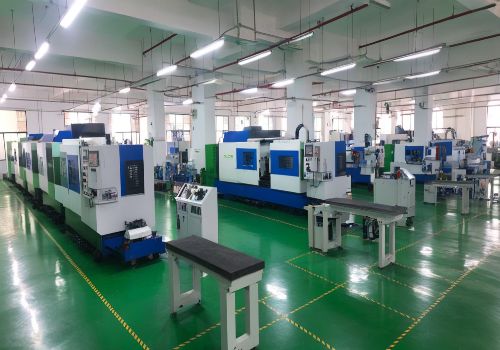
The Large-Scale CNC Workflow
Stage 1: Production Engineering
-
DFM Analysis: Design for Manufacturing optimization
-
Process Planning: Routing through multiple machines
-
Tooling Strategy: Standardized tooling across machines
-
Fixture Design: Quick-change, modular workholding
Stage 2: Programming & Simulation
-
CAM Programming: Optimized toolpaths for each machine
-
Virtual Commissioning: Digital twin simulation of entire process
-
NC Code Management: Version control and distribution
Stage 3: Setup & Launch
-
Simultaneous Setup: Multiple teams preparing different stations
-
First-Article Validation: Comprehensive inspection before full production
-
Process Sign-off: Quality approval for production run
Stage 4: Continuous Production
-
Lights-Out Operation: Unattended machining overnight
-
Real-Time Monitoring: Machine health and production tracking
-
Predictive Maintenance: Preventing unplanned downtime
Stage 5: Quality & Delivery
-
Automated Inspection: In-line measurement systems
-
Packaging Automation: Robotic packaging and labeling
-
Logistics Integration: Direct shipping to customer facilities
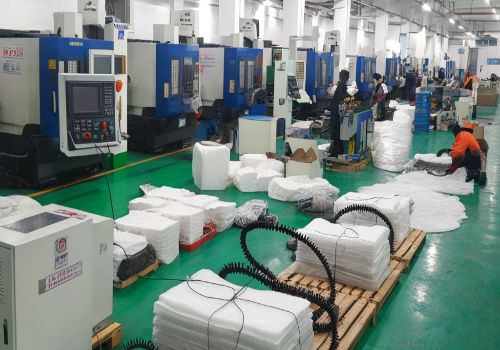
Large-Scale vs. Small-Scale: Key Differences
Volume Optimization Strategies
-
Dedicated production lines for high-volume parts
-
Group technology cells for part families
-
Mixed-model production for flexibility
Tooling Management
-
Centralized tool presetting: Tools prepared offline
-
RFID tool tracking: Real-time tool life monitoring
-
Automated tool delivery: AGVs supplying tools to machines
Maintenance Approach
-
Preventive maintenance: Scheduled during production planning
-
Predictive maintenance: Sensors forecasting failures before they occur
-
Spare parts inventory: Critical components kept on-site
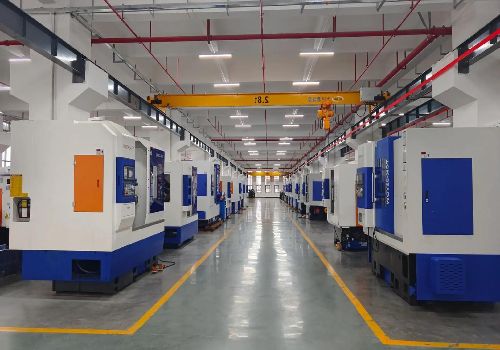
Technology Enabling Large-Scale Operations
Industrial IoT & Industry 4.0
-
Machine connectivity: All equipment networked
-
Real-time data collection: Production metrics every second
-
Cloud analytics: Processing millions of data points
Automation Systems
-
Robotic machining cells: Integrated robots and CNC machines
-
Automated quality control: Vision systems and laser scanning
-
Smart warehouses: Automated storage with inventory tracking
Advanced Materials Management
-
Just-in-Time delivery: Scheduled material arrival
-
Automated material identification: Barcoding and RFID tagging
-
Chip management systems: Automated coolant recycling and chip processing
Case Study: Automotive Transmission Component Production
Challenge: Produce 250,000 transmission housings annually with 99.98% quality rate
Solution Implemented:
-
Dedicated transfer line with 12 machining stations
-
Robotic loading between stations
-
In-process gauging at 4 critical stations
-
Automated pallet system for part movement
Results:
-
⚙️ Production rate: 1 part every 90 seconds
-
📊 Quality rate: 99.991% first-pass yield
-
⏱️ Uptime: 94.7% across all stations
-
💰 Cost reduction: 38% per part vs. previous methods
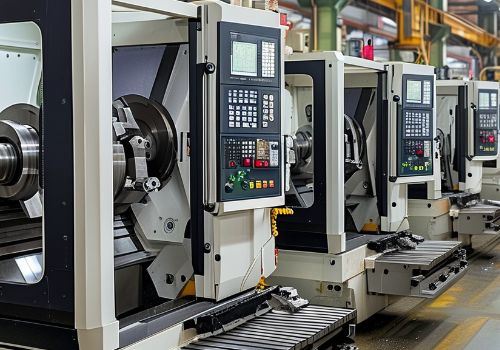
Workforce Structure in Large-Scale Operations
| Role | Responsibilities | Typical Shifts |
|---|---|---|
| Production Manager | Overall operation management | Day shift |
| Process Engineers | Optimization and troubleshooting | Day + support |
| CNC Programmers | Programming and simulation | Day shift |
| Maintenance Technicians | Equipment maintenance | 24/7 coverage |
| Machine Operators | Machine monitoring and setup | 3-shift rotation |
| Quality Inspectors | Quality verification | 2-shift rotation |
Challenges in Large-Scale CNC Operations
Technical Challenges
-
System integration: Making different equipment and software work together
-
Maintaining consistency: Across hundreds of machines
-
Scaling quality systems: Ensuring every part meets specifications
Operational Challenges
-
Supply chain management: Raw material availability for high volume
-
Workforce management: Training and retaining skilled staff
-
Energy management: Power consumption optimization
Business Challenges
-
Capital investment: $10-100 million for new facilities
-
Return on investment: Achieving profitability with thin margins
-
Market flexibility: Adapting to demand changes
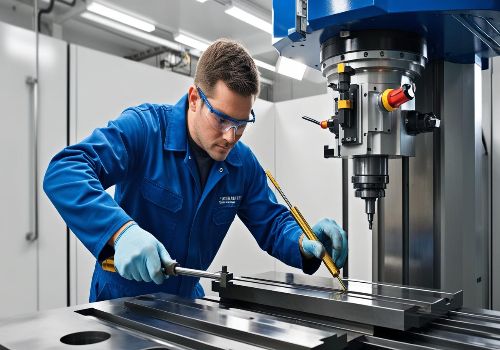
Future Trends in Large-Scale CNC
Artificial Intelligence Integration
-
Predictive quality: AI forecasting quality issues before they occur
-
Adaptive machining: Real-time adjustment of cutting parameters
-
Automated optimization: AI-driven process improvement
Sustainable Manufacturing
-
Energy recovery systems: Capturing and reusing energy
-
Closed-loop cooling: 100% coolant recycling
-
Carbon-neutral operations: Renewable energy and offset programs
Additive/Subtractive Hybrid
-
3D printing near-net shapes: Reducing material waste
-
CNC finishing printed parts: Achieving precision surfaces
-
Integrated systems: Combined printing and machining cells
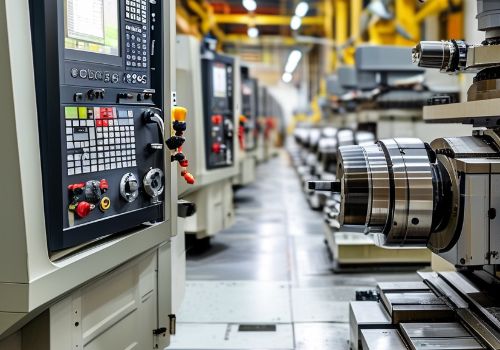
Conclusion
Large-scale CNC machining operations represent a symphony of technology, processes, and human expertise working in perfect harmony. These facilities demonstrate how precision manufacturing can be scaled to meet global demands while maintaining exceptional quality standards.
The evolution toward fully connected, automated smart factories continues to push the boundaries of what’s possible in manufacturing volume, precision, and efficiency. For companies that can master large-scale CNC operations, the competitive advantages are substantial and enduring.
Considering scaling your manufacturing operations? [Contact our consulting team] for a comprehensive assessment and implementation roadmap.

